Believed to be an avatar or reincarnation of Lord Vishnu, Maharishi Kapil Muni (or Sage Kapila) has an important position in the Hindu pantheon of sages. His ashram in West Bengal’s Gangasagar is visited by millions of pilgrims. Not many know, however, that on the other end of the country, in Maharashtra, is another pilgrimage site associated with Kapil Muni. Popular within the state, but lesser known outside it, in Igatpuri is a hallowed area known as Kapildhara, which is considered no less sacred and revered in the same context.
A holy site of mythological wonders
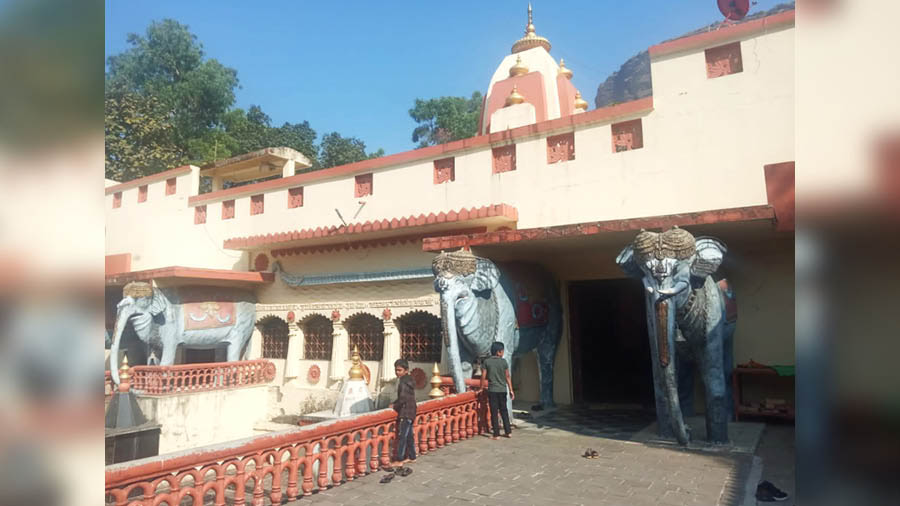
The entrance of the ashram Sagar Dalbhagat
Located in Kavnai, Igatpuri, this holy site is believed to be the place where a young five-year-old Kapil Muni — one of the 24 incarnations of Satyayuga as per Hindu mythology — instructed his mother, Devhuti on Sankhya Shastra or the science of statistics.
The precincts of the Ashram today have a main temple where Ram, Sita and Laxman along with Hanuman are regularly worshipped to the music of drums and countless gongs. A little away from the main temple is another cluster of temples with a large Shivling and idols of Durga as well as Gajanan Maharaj. Occupying pride of place inside the precincts are the two kunds or bathing enclosures — their source of water has remained a ‘mystery’ till date and the kunds are filled by a continuous stream of water from through conduits shaped like cow heads, since as far back as anyone remembers. According to mythological tenets, it is believed that the region is the confluence of two rivers, Godavari and the Kapila, which is also known as the gupt Godavari or hidden Godavari. The water in the kunds is thus considered holy and traditions say that the moksh or emancipation from mortal sins that can be achieved by a bathing in Gangasagar, can also be obtained in Kapildhara. This fact explains why Kapildhara is held in high regard, and also why pilgrims from all over have made this an integral part of their religious sojourns.
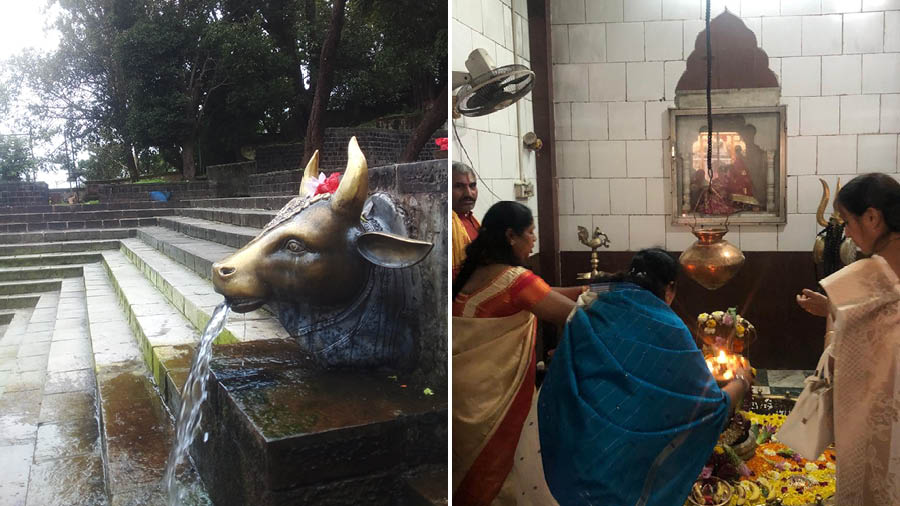
One of the cow head conduits that fills up the larger kund and (right) a puja inside one of the temples Priya Bagchi
It is also believed by many that in ancient times, the revered Hindu religious event Kumbh Mela was first organised here. With regard to the Kumbh Mela, historical documents suggest that during the time of Peshwas, two kunds were made by the Maratha rulers — Ramkund at Panchvati in Nashik for the worshippers of Ram, and Kushavarta at Trimbakeshwar for the worshippers of Shiva. However, before the emergence of the ‘new’ kunds, the one at Kapildhara was one of the holy bathing sites of the Kumbh Mela.
Owing to the legend of Kapil Muni instructing his mother in Sankhya Shastra here, the site is also known for Matrugaya Tirth or Matru tarpan and it is traditionally thought that one who takes a holy dip here in remembrance of their mother completes all their earthly liabilities towards her.
Where Ram met Shiva, and other legends
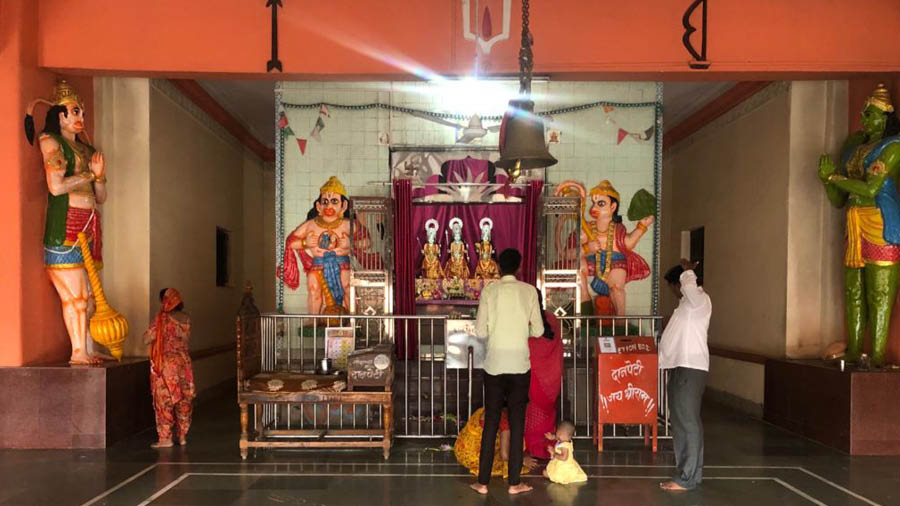
The main temple within the premises with idols of Ram, Sita, Laxman and Hanuman Priya Bagchi
Legends and stories from mythology abound at Kavnai, from epics like Ramayan as well as stories that intersect history with mythology and religion.
Among the stories from Ramayan, the popular ones connected to Kapildhara are more than one. Some believe that this was where Ram met Lord Shiva, and also that this was where Laxman lay unconscious after being struck by Ravana, while Hanuman set out to look for the magical herb sanjeevani buti. The story goes on to say that Hanuman was delayed by the demon Kalanemi (the son of Maricha) as he made his way through Shri Kshetra Kapildhara. The god killed the demon in the end, and that’s how the region got its name — Kavnai.
A story where mythology meets history in Kavnai says that in Kapildhara, Samarth Ramdas, the spiritual guru of Chhatrapati Shivaji Maharaj, comforted the king during a moment of disorientation. It was here that Ramdas informed the Chhatrapati that he had been born to Sanantan Dharma, and guided the royal to establish temples of Hanuman in every village of Maharashtra.
Another important story of Kapildhara references the much-revered Hindu guru, saint and mystic Gajanan Maharaj. The belief is that he achieved enlightenment here after his 12-year tapasya. Shaligrams or black stones connected to his tales of devotion to God and his many miraculous cures can be viewed at Kapildhara even today.
A traveller’s gift
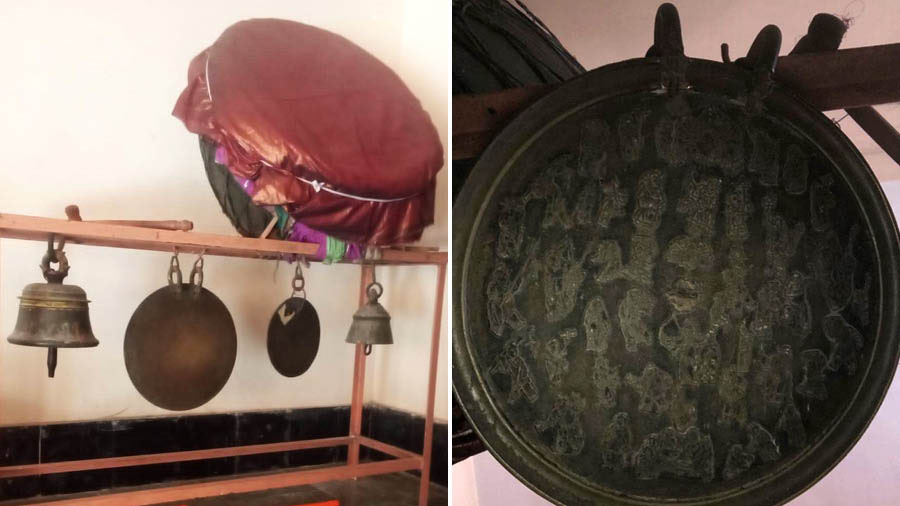
The gong that is believed to have been a gift from Hiuen Tsang Sagar Dalbhagat and Priya Bagchi
Attention must be drawn to a relic that has a special place in Kapildhara and is in use even today. It is claimed that a gong was gifted to the ashram by the famous Chinese traveller and philosopher, Hiuen Tsang who had spent considerable time here. Immensely impressed by the shastras taught here, he gifted the gong to the ashram. Visitors can actually hold this historical item in their own hands and marvel at the etchings of many Chinese figures on the face of the gong.
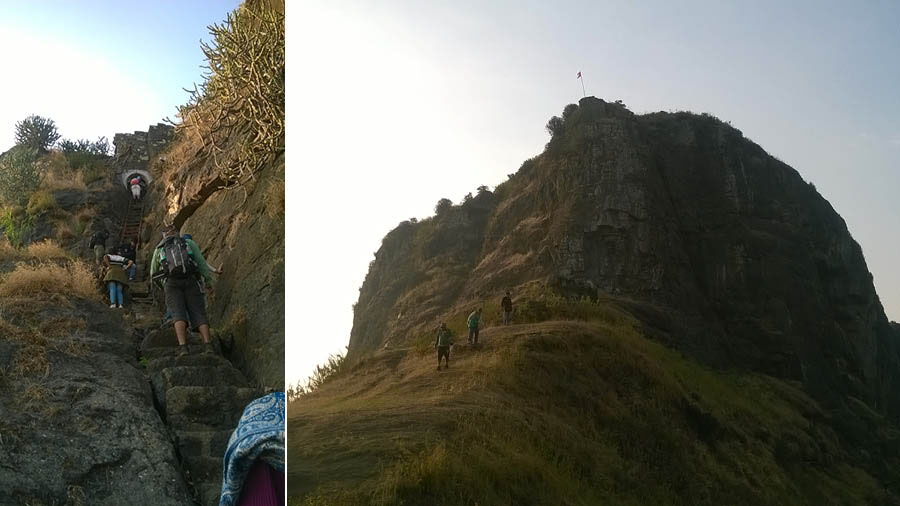
The hilltop Kavnai fort is visible from the ashram and a popular hiking spot Wikimedia Commons
Travel details:
- Kapildhara, Kapil Muni’s Ashram, Kavnai, lies between Mumbai and Nashik in the Igatpuri district and can be reached by road from either city
- NH3 connects Mumbai and Nashik to Kapildhara, and from either point the road to Kapildhara begins from the town of Ghoti, where a prominent concrete gate heralds the way to the ashram.
